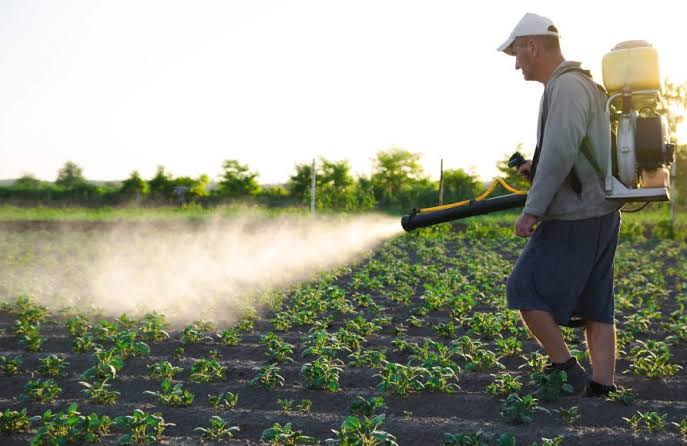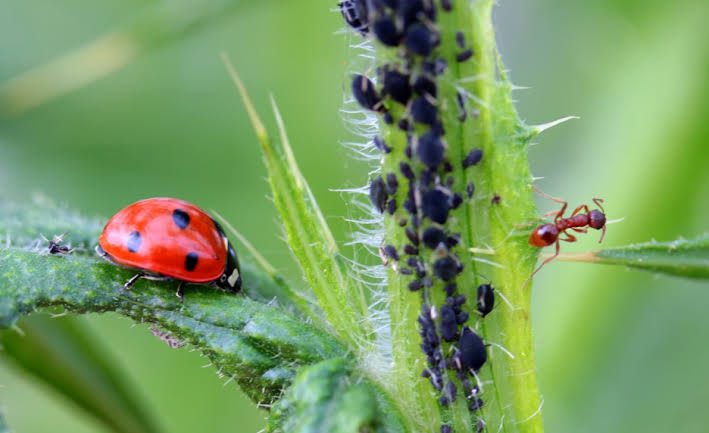Pest control for crops is essential for farmers to protect their plants from harmful insects, rodents, and diseases. It plays a crucial role in ensuring a healthy and bountiful harvest. In this article, we will explore the importance of pest control in agriculture and various methods used to achieve it.
Farming is a fundamental activity for providing food to people around the world. However, it is not without its challenges. One of the biggest challenges faced by farmers is the presence of pests that can damage or destroy their crops.
Pests are organisms that harm plants, reducing their yield and quality. They include insects like aphids, beetles, and caterpillars, as well as diseases caused by fungi, bacteria, and viruses.
Pests can cause significant economic losses for farmers. They can reduce crop yields, lower crop quality, and increase production costs. In severe cases, a pest infestation can lead to crop failure, resulting in food shortages and increased prices for consumers.
To combat these challenges, farmers employ various pest control methods. These methods can be broadly categorized into biological, chemical, and cultural control methods.
In addition, pest control for crops is crucial for ensuring food security and sustainable agriculture. Farmers employ a variety of methods to protect their crops from pests, ranging from biological control to chemical and cultural methods.
Integrated pest management and organic farming are also becoming increasingly important in modern agriculture as we strive for environmentally friendly and sustainable food production. By effectively managing pests, farmers can ensure the availability of high-quality, abundant crops for a growing global population.
Read Also: Bengal Cat Breed (Felis catus × Prionailurus bengalensis): Description and Complete Care Guide
Pest Control Methods for Crops

Here are some common pest control methods for crops:
1. Biological Control
Predators and Parasites: Introduce natural enemies of pests, such as ladybugs, lacewings, or parasitic wasps, to reduce pest populations.
Microbial Insecticides: Use beneficial microorganisms like Bacillus thuringiensis (Bt) to control insect pests.
2. Chemical Control
Pesticides: Apply chemical pesticides, including insecticides, herbicides, and fungicides, to target specific pests, weeds, or diseases.
Fumigation: Use gaseous pesticides to control soil-borne pests and pathogens.
3. Cultural Control
Crop Rotation: Change the type of crops planted in a field each season to disrupt the life cycles of pests and reduce their numbers.
Polyculture: Grow different crops together to confuse and deter pests, creating a less favorable environment for them.
Sanitation: Maintain clean farming practices to remove debris and potential pest habitats.
4. Physical Control
Mechanical Barriers: Use physical barriers like nets, row covers, or traps to physically prevent pests from reaching crops.
Tillage: Use plowing and cultivation techniques to bury and disrupt pest larvae and weeds.
5. Genetic Control
Resistant Crop Varieties: Develop and plant crop varieties that are naturally resistant to specific pests or diseases.
Genetic Modification: Use biotechnology to create genetically modified crops with built-in pest resistance.
Trap Crops: Plant attractive crops near the main crop to divert pests away from the primary target.
Monitoring and Early Detection: Regularly inspect crops for signs of pest infestations to take action before they become widespread.
Integrated Pest Management (IPM): Combine multiple pest control methods in a coordinated and sustainable manner, emphasizing the least harmful approaches first.
Organic Pest Control: Avoid synthetic chemicals and instead use natural and organic methods like neem oil, diatomaceous earth, or beneficial nematodes.
Biological Control Agents: Release beneficial insects, nematodes, or microorganisms into the field to control pests.
Traps and Lures: Use pheromone traps and attractants to monitor and trap pests.
Selective Herbicides: Apply herbicides that target specific weed species while sparing crops.
Remember that the choice of pest control method should consider factors such as the type of pest, crop type, environmental impact, and economic feasibility. Integrated pest management (IPM) is often favored as it balances various methods for effective and sustainable pest control in agriculture.
Read Also: Complete List of the Different Breed of Cats
Benefits of Controlling Pests for Crops

Controlling pests for crops offers numerous benefits, which are essential for the success of agriculture and food production. Here are some key advantages of effective pest control:
1. Increased Crop Yield: Pest control measures help to minimize damage caused by insects, diseases, and weeds, resulting in higher crop yields. This means more food is produced from the same amount of land.
2. Improved Crop Quality: Reduced pest damage leads to improved crop quality. High-quality crops are more valuable in the market and meet stringent quality standards.
3. Enhanced Food Security: Pest control is essential for food security as it ensures a stable and reliable food supply. Without effective pest management, crop losses can lead to food shortages and higher prices.
4. Economic Benefits: By protecting crops from pests, farmers can increase their income and profitability. Higher yields and better-quality crops often lead to increased revenues.
5. Environmental Sustainability: Sustainable pest control methods, such as biological control and organic farming, minimize the environmental impact of agriculture. They reduce the need for synthetic chemicals, which can harm ecosystems.
6. Reduced Pesticide Use: Effective pest control allows farmers to use fewer chemical pesticides. This benefits both the environment and human health by decreasing chemical residues in food and reducing pollution.
7. Preservation of Biodiversity: Sustainable pest management methods encourage the preservation of natural predators and beneficial insects. This helps maintain a balanced ecosystem and supports biodiversity.
8. Health Benefits: Reduced pesticide use can lead to lower exposure to harmful chemicals for farmworkers, nearby communities, and consumers. This contributes to improved public health.
9. Mitigation of Crop Diseases: Pest control measures can help prevent the spread of crop diseases, reducing the need for costly disease management and ensuring healthier plants.
10. Long-Term Farm Sustainability: Effective pest control contributes to the long-term sustainability of farming operations. It helps protect soil health, conserve water resources, and maintain the overall productivity of agricultural land.
11. Adaptation to Climate Change: Pest control measures can assist farmers in adapting to changing climate conditions. As climate change may alter pest behavior and distribution, managing pests becomes even more critical.
12. Global Agricultural Trade: Pest control ensures that crops meet international phytosanitary standards, allowing for the export of agricultural products and participation in global trade.
In summary, pest control for crops is essential for ensuring food security, economic prosperity, and environmental sustainability. It not only protects crops and improves their quality but also has far-reaching benefits for communities, ecosystems, and the global agricultural industry.
Read Also: Effects of Pollution on Fish, Algae, Zooplankton, Benthic Organisms, and Water Quality
